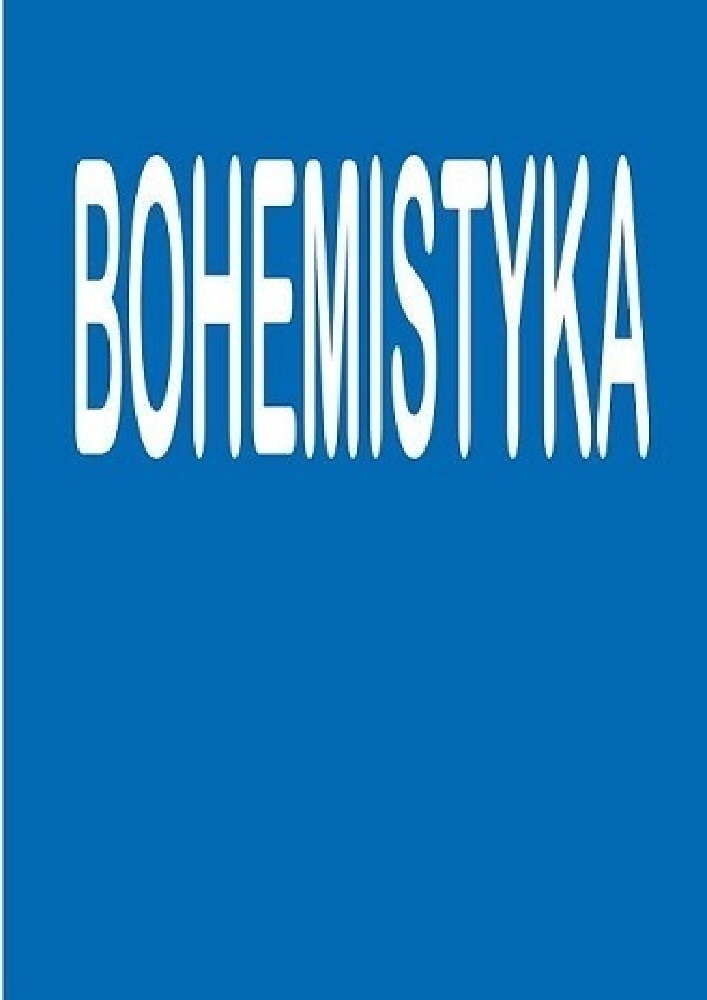Abstract
The subject of the analysis are the methods of translating phrases and arca de lignis levigatis in Czech and Polish biblical texts from the period from the 14th to the 16th century. The aim of the research is to show to what extent the lexical shape of the equivalents of these phrases in the mentioned translations was related to the choice of the translation basis, the translation tradition prevailing in a given circle, as well as the interpretations and explanations adopted for a specific place in the Bible.
The analyzes conducted in the article show that the authors of all Czech Bible translations avoid literal translations of the noun tebh and its Latin equivalent arca. Both Catholic and Protestant translators regularly render it through a noun koráb. This way of translation is also adopted by Catholic Polish Bibles, modeled on the Czechs. The state observed in the studied texts proves that the translating decisions were motivated not by the meaning of a noun from the Hebrew or Latin basis, but were related to possible depictions of Noah's ark in theological writings or even perpetuated in generally understood Christian culture.
Other solutions on the basis of Polish accept Protestant translations from the original languages, in which the constitutive element of the phrase make nouns archa and a chest, directly referring to the meaning of the noun from the translation basis.
References
Berns A. D., 2015, The Bible and Natural Philosophy in Renaissance Italy: Jewish and Christian Physicians in Search of Truth, Cambridge.
Biblia Tysiąclecia, 1982, wydanie trzecie poprawione, Poznań.
Briks P., 1999, Podręczny słownik hebrajsko-polski i aramejsko-polski Starego Testamentu, Warszawa.
Calascio M. de, 1747, Concordantiae sacrorum Bibliorumhebraicorum... Londini.
Cohen Ch., 1972, Hebrew tebh: Proposed Etymologies, Janescu, nr 4, s. 44–45
Elektronický slovník staré češtiny, 2020. Praha, oddělení vývoje jazyka Ústavu pro jazyk český AV ČR, v. v. i., 2006–. Online: http://vokabular.ujc.cas.cz [do- stęp: 13.05.2020].
Flavi Josephi opera, 1892, Berlin.
Flawiusz J., 1979, Dawne dzieje Izraela, Poznań.
Fürst J., 1840, Librorum sacrorum Veteris Testamenti Concordantiae..., Lipsk.
Greń Z., 1996, Techniki przekładowe staroczeskich tłumaczy Biblii i paralelne metody objaśniania tekstu w folklorze, Rocznik Slawistyczny 50, s. 77–86.
Hirsch E. G., Hyvernat H., 2020, Gopher-wood, [w:] Jewish Encyclopedia. Online: http://www.jewishencyclopedia.com/articles/6808-gopher-wood [dostęp: 7.05.2020].
Jewish Encyclopedia, 2020. Online: http://www.jewishencyclopedia.com/articles/1780-ark-of-noah [dostęp: 22.04.2020].
Jougan A., 1957, Słownik kościelny łacińsko-polski, Poznań.
Kwilecka I., 1990, Średniowieczna Biblia czeska a staropolskie przekłady biblijne (Zarys problematyki badawczej), Acta Universitatis Lodziensis. Folia Linguistica 23, s. 73–82.
Kwilecka I., 2003a, Staropolskie przekłady Biblii i ich związki z biblistyką europejską. Zarys problematyki, [w:] eadem, Studia nad staropolskimi przekładami Biblii, Poznań, s. 209–229.
Kwilecka I., 2003b, Z dziejów przekładu pierwszej polskiej Biblii protestanckiej, [w:] eadem, Studia nad staropolskimi przekładami Biblii, Poznań, s. 335–352.
Kyas V., 1997, Česká bible v dějinách národního písemnictví, Praha: Vyšehrad.
Marini M., 1593, Collectio messis. Dictionarium Latino Hebraeum ex thesauro decerptum, Venetia.
Merell J., 1956, Bible v českých zemích od nejstarších dob do současnosti, Praha.
Parkhurst J., 1813, A Hebrew and English Lexicon Without Points: In which the Hebrew and Chaldee Words of the Old Testament are explained in their leading and derived Sensus..., Londyn.
Riera D., 1700, Psalterium Marianum praefiguratum, Maiorica.
Sancti Aurelii Augustini, Hipponensis episcopi, Opera omnia, 1837, Paris.
Scheffer V., 1712, Biblia immacilata.Tomus secundus, Praga.
Sieradzki A., 2019, Tłumaczenie frazy תֵּבַת עֲצֵי־גֹפֶר i jej odpowiedników łacińskich w polskich tekstach biblijnych XVI wieku, [w:] Studia hebraica. Księga pamiątkowa Seminarium Wiedzy o Hebrajszczyźnie Biblijnej dedykowana Pani Profesor Kamilli Termińskiej, Katowice, s. 221–238.
Słownik łaciny średniowiecznej w Polsce, 1983, tom V: I–Lyrista, red. M. Plezia, Wrocław.
Słownik polszczyzny XVI wieku, 1976, tom X, red. M. R. Mayenowa, Warszawa.
Spoelstra J. J., 2013, Life Preservation in Genesis and Exodus: An Exegetical Study of the Tebh, Stellenbosch.
Staročeská textová banka, 2020. Online: https://vokabular.ujc.cas.cz/banka.aspx?idz=SDTB [dostęp: 15.05.2020].
Szeruda J., 1932, Geneza i charakter Biblii gdańskiej, Warszawa.
The NAS Old Testament Hebrew Lexicon, 2020, Online: https://www.biblestudytools.com/lexicons/hebrew/nas/tebah.html [dostęp: 9.05.2020].
Wanicowa Z., 2010, Mechanizm błędów translacyjnych w »Biblii Królowej Zofii« a spór o podstawę jej przekładu, Językoznawstwo : współczesne bada- nia, problemy i analizy językoznawcze 1 (4), s. 13–35.
Ziomek J., 1976, Renesans, Warszawa.
License
Copyright (c) 2020 Andrzej SIERADZKI

This work is licensed under a Creative Commons Attribution-NonCommercial-NoDerivatives 4.0 International License.




